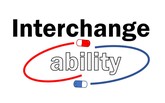Biosimilars/Research
Uzpruvo/AVT04 biosimilar in profile
Alvotech and STADA’s Uzpruvo/AVT04 is an ustekinumab biosimilar with similar efficacy, tolerability, safety and physicochemical and biological characteristics to Stelara, the reference product, as has been summarized in a recent study published in Clinical Drug Investigation [1].
Long-term real-world safety experience of biosimilars confirms concept of biosimilarity
A review by Sagi S, et al. highlighted that biological medicines are well established in clinical practice for the treatment of many serious and chronic conditions [1].
Budget impact analysis of Rixathon introduction in Chile for non-Hodgkin lymphoma
Non-Hodgkin lymphoma (NHL) is a significant global health concern, with diffuse large B-cell lymphoma (DLBCL) and follicular lymphoma (FL) being the most prevalent subtypes. In Chile, treatment for DLBCL and FL is covered by the public healthcare system, primarily using rituximab-based therapies. The recent introduction of rituximab biosimilars, such as Rixathon, presents a potential for cost savings in the healthcare system.
Biosimilars in inflammatory bowel disease: are we ready for multiple switches
A review by Teixeira FV et al. discusses whether scientific evidence is sufficient to support multiple switches between biologicals and biosimilars in patients with inflammatory bowel diseases (IBD) [1].
Topline results from clinical development programme for candidate biosimilar AVT05 golimumab
In April and June 2024, Icelandic biosimilar company Alvotech announced promising results from two clinical studies (AVT05-GL-P01, NCT05632211; AVT05-GL-C01, NCT05842213) for AVT05, their candidate golimumab biosimilar. Alvotech is the first company to announce topline results of clinical trials using a proposed biosimilar to Simponi (Janssen Biotech).
Efficacy and safety of the proposed P043 (Zerafil) vs reference omalizumab in allergic asthma
In June 2024, the results of a phase III clinical trial of P043/Zerafil (omalizumab), a proposed biosimilar of Novartis’ Xolair produced by CinnaGen in Iran, showed no significant difference in efficacy and safety parameters to the originator.
Tocilizumab and pembrolizumab biosimilar advances for Korean firms
In June 2024, Celltrion announced promising results from their phase III study for CT-P47, a biosimilar candidate of RoActemra (tocilizumab), in patients with rheumatoid arthritis (RA). Additionally, the company has submitted an investigational new drug (IND) application to the US Food and Drug Administration (FDA) for the phase III clinical trial of CT-P51, its Keytruda (pembrolizumab) biosimilar. This announcement follows the news that in April 2024, rival Korean biologicals company Samsung Bioepis initiated a phase III clinical trial for SB27, their pembrolizumab biosimilar.
Unveiling key clinical findings for denosumab biosimilar candidates
In April 2024, Henlius Biotech and Organon announced that the phase III comparative clinical trial for their investigational denosumab biosimilar (HLX14) met the primary endpoints. This follows the news released earlier in the year, that Alvotech and Polpharma achieved positive topline results from their pharmacokinetic (PK) studies for their denosumab biosimilar candidate (AVT03). The originator product is Amgen’s Prolia/Xgeva.
Topline results for Polpharma Biologics’ vedolizumab biosimilar candidate
In February 2024, Polpharma Biologics (Polpharma) unveiled topline results demonstrating the pharmacokinetic (PK) and pharmacodynamic (PD) comparability of PB016, their biosimilar candidate for vedolizumab, with its reference drug, Entyvio, by Takeda Pharmaceutical.
Comparing biosimilar adoption: Medicare Advantage versus traditional Medicare
Biosimilar products, vital for widening access to essential treatments and reducing healthcare costs, face varied uptake influenced by factors like pricing and healthcare settings. Kozlowski et al.'s study compares adoption rates in Medicare Advantage (MA) and Traditional Medicare (TM), revealing significant differences [1].












